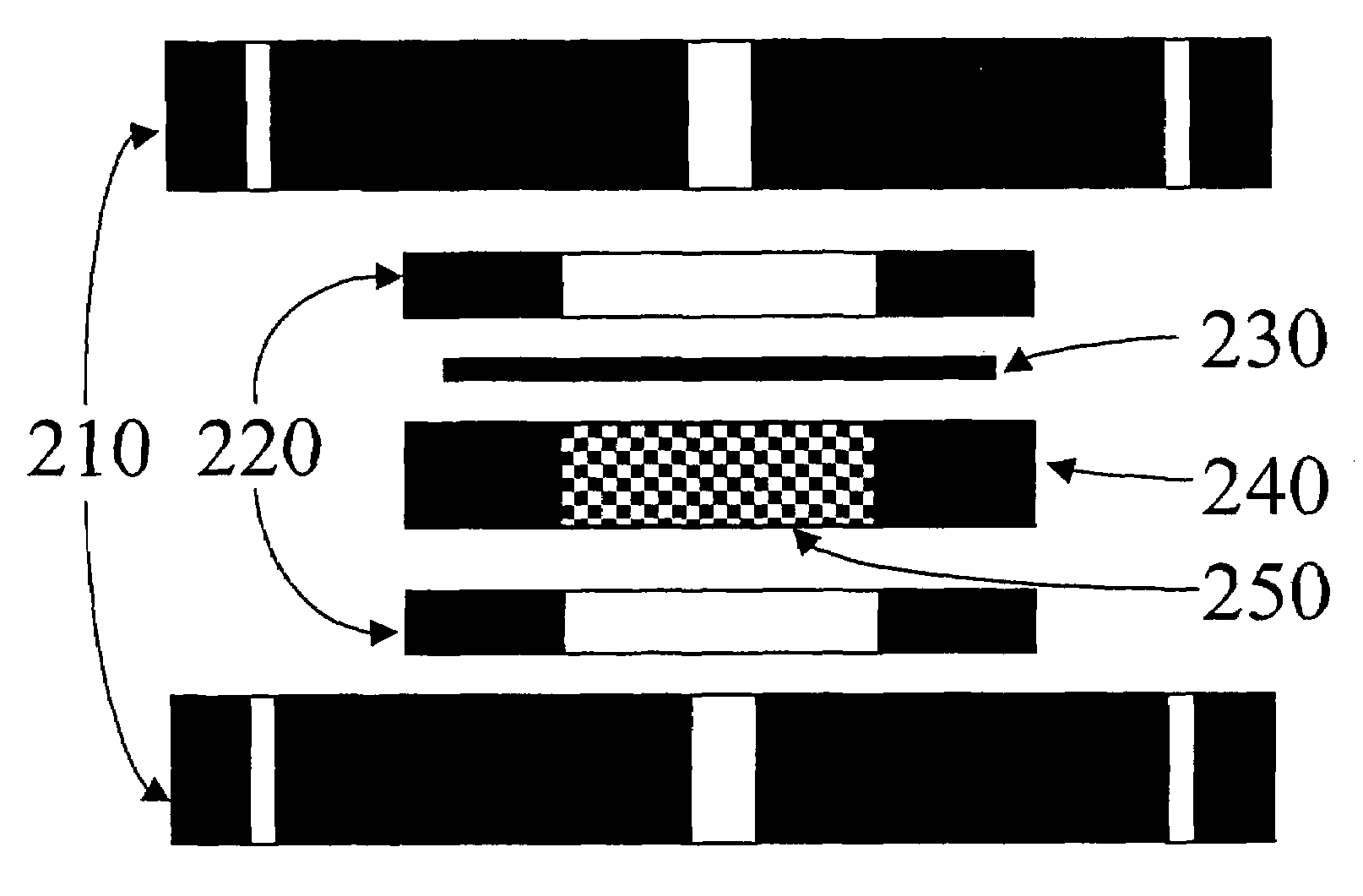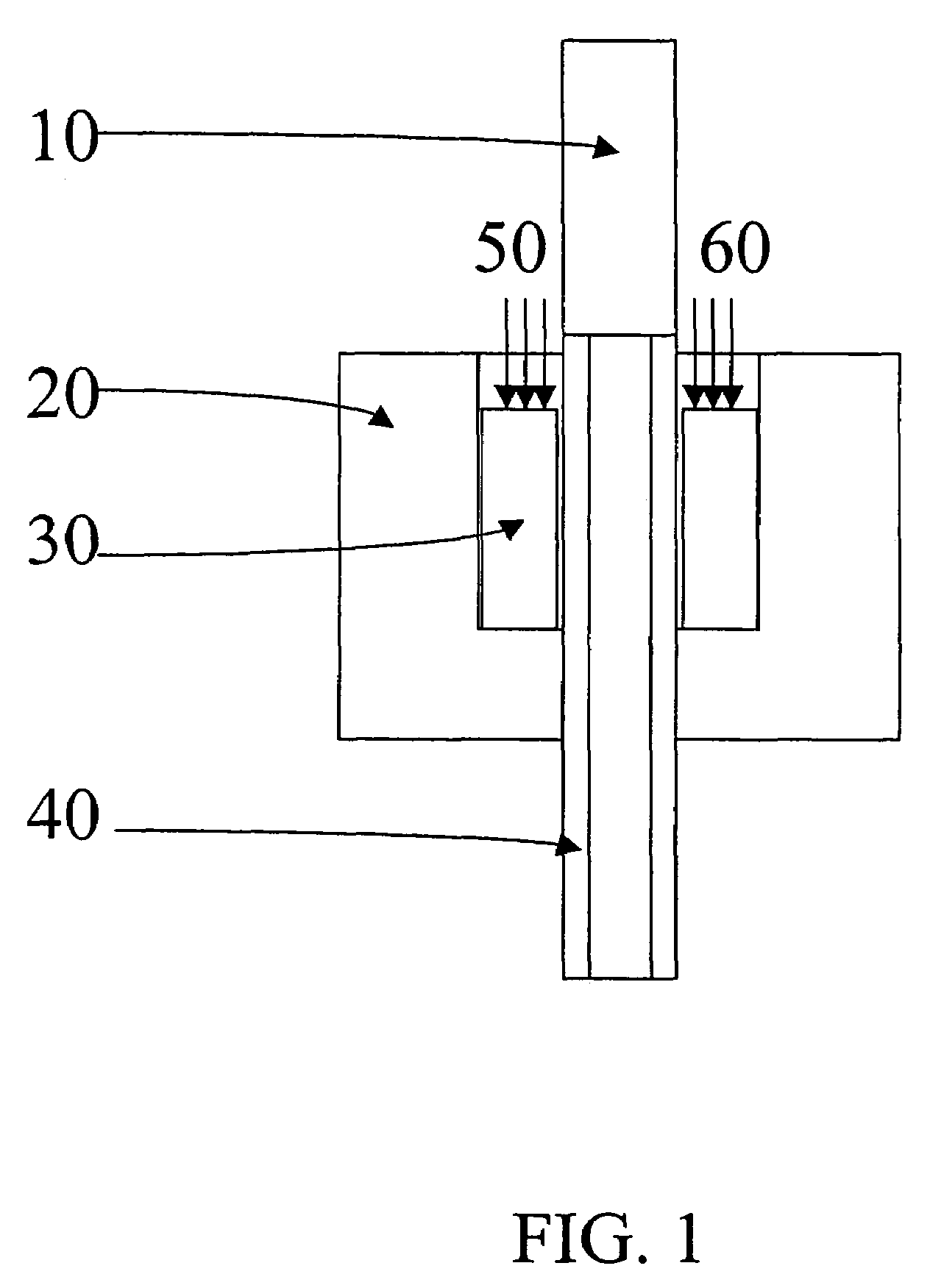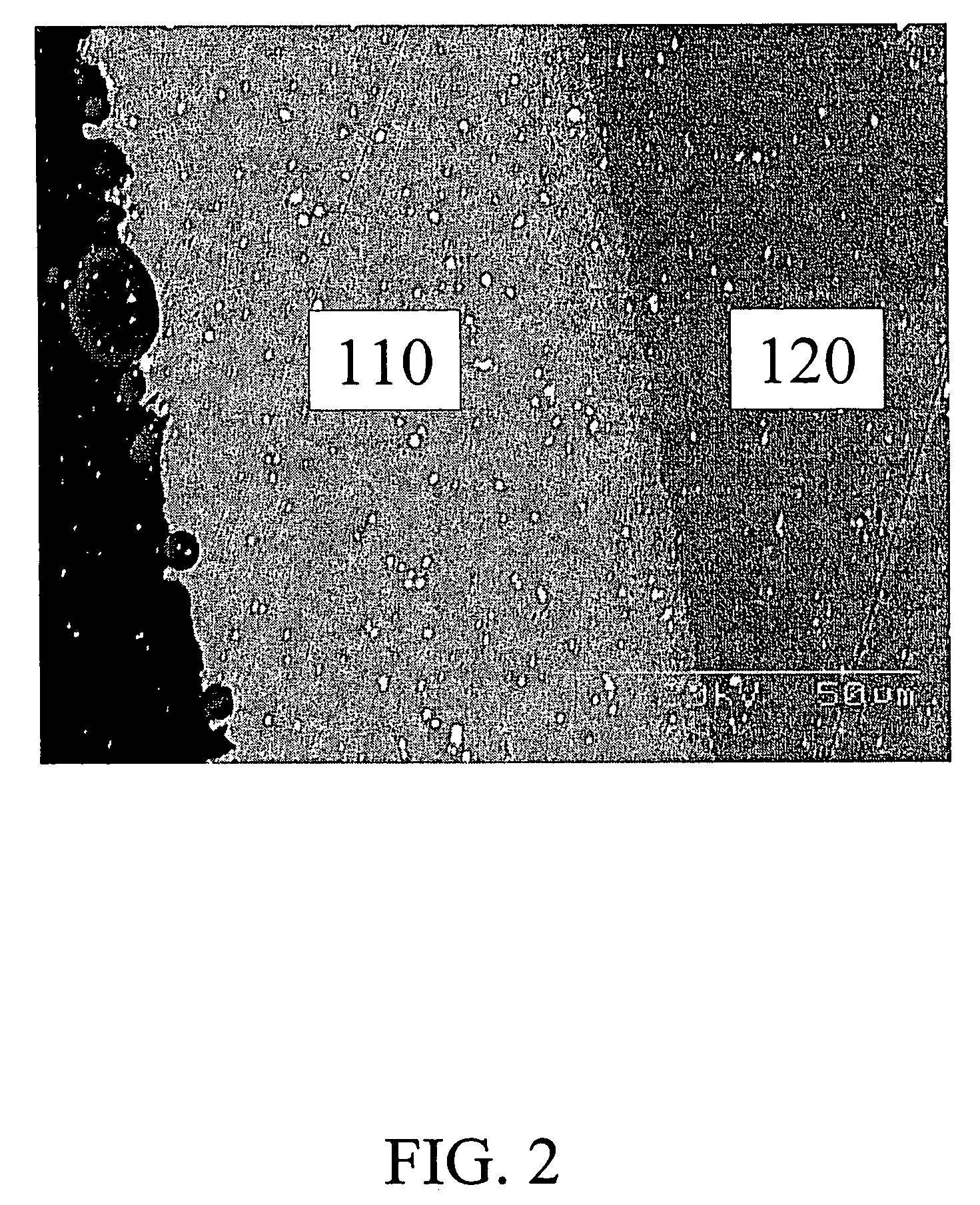Diffusion bonding for metallic membrane joining with metallic module
a technology of metallic membrane and metallic module, which is applied in the direction of manufacturing tools, non-electric welding apparatus, and welding apparatus, etc., can solve the problems of argon arc welding generally unsatisfactory for welding thin pd-based membranes with metallic modules, degrade or destroy the strength, ductility, and other metallurgical properties of the membrane, and achieve the effect of reducing the cost of argon arc welding
- Summary
- Abstract
- Description
- Claims
- Application Information
AI Technical Summary
Benefits of technology
Problems solved by technology
Method used
Image
Examples
example 2
[0050]Joining a circular Pd-5% / wt Ru alloy disc 230 with a stainless steel wafer 240. The process was performed with a stainless steel 304 wafer 240 having an outside diameter of 2″, an inside diameter of 1″ and a thickness of 1 / 16″ was punched from a sheet. One surface of the wafer 240 was polished with grit 600 sandpaper and then buffered and cleaned. A Pd-5% / wt Ru alloy disk 230 with a diameter of 1.75″ and a thickness of 50 μm was placed on the cleaned surface. After compression with up to 3000 psig mechanical pressure through the flanges by torque load as shown in FIG. 3, the apparatus was baked in a vessel at 650° C. for 24 hr under 15 psig hydrogen. After properly cooling down, the joined disk was taken out and welded with a stainless steel flange 320 to form a membrane module as shown in FIG. 4, where the membrane foil was properly supported by a porous substrate.
[0051]FIG. 4 is a cross-sectional view of a Pd—Ru alloy membrane module 310 after diffusion bonding with a stainl...
example 3
[0054]Joining a Pd sheet 420 with a stainless steel frame. A 3.25″ by 6.25″ stainless steel 304 sheet with a thickness of 1 / 16″ with a cut away rectangle 430 in its middle to form a frame 410 whose width is 0.625″, as shown in FIG. 5. One surface of the sheet was polished with grit 600 sandpaper and then buffered and cleaned. A 3″×6″ palladium sheet with a thickness of 47 μm was placed on the cleaned surface. After properly compressed up to 3000 psig mechanical press, the apparatus was baked in a vessel at 650° C. for 24 hr under 15 psig hydrogen. After properly cooling down, the joined parts were taken out and welded to a stainless steel flange to form a membrane module, where the membrane foil was supported by a porous substrate. The bond withstood strength and gas-tight testing as described in example 1.
example 4
[0055]Joining a circular 75% / wt Pd-25% / wt Ag alloy disc with a stainless steel wafer at a higher temperature for a shorter time. A similar joining method was used as in example 1 except that membrane foil was 75% / wt Pd-25% / wt Ag alloy and that the bonding process was carried out at 700° C. for 5 hr. The bond withstood strength and gas-tight testing as described in example 1.
PUM
| Property | Measurement | Unit |
|---|---|---|
| pressure | aaaaa | aaaaa |
| temperature | aaaaa | aaaaa |
| temperature | aaaaa | aaaaa |
Abstract
Description
Claims
Application Information
 Login to View More
Login to View More - R&D
- Intellectual Property
- Life Sciences
- Materials
- Tech Scout
- Unparalleled Data Quality
- Higher Quality Content
- 60% Fewer Hallucinations
Browse by: Latest US Patents, China's latest patents, Technical Efficacy Thesaurus, Application Domain, Technology Topic, Popular Technical Reports.
© 2025 PatSnap. All rights reserved.Legal|Privacy policy|Modern Slavery Act Transparency Statement|Sitemap|About US| Contact US: help@patsnap.com



